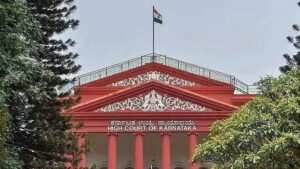China’s BeiDou Navigation Satellite System (BDS), fully operational since June 2020, has emerged as a formidable global navigation network, rivaling the U.S.-owned Global Positioning System (GPS). With 56 satellites—nearly twice the 31 of GPS—BeiDou offers high-precision positioning, navigation, and timing (PNT) services, claiming accuracy within 10 centimeters in the Asia-Pacific region compared to GPS’s 30 centimeters. Unlike GPS, Galileo, and GLONASS, BeiDou’s two-way communication capability allows it to identify receiver locations and transmit data back to satellites, raising significant security concerns. For India, BeiDou’s expanding reach, particularly through China’s Belt and Road Initiative (BRI) and its military applications, poses multifaceted challenges, from regional security to technological dependency and intelligence vulnerabilities.
BeiDou’s development began in the 1990s, driven by China’s need for strategic autonomy after the 1996 Taiwan Strait Crisis exposed its reliance on GPS. The system’s completion in 2020 marked a 20-year endeavor involving over 300,000 scientists and engineers. Today, it serves over 120 countries, including BRI partners like Pakistan, Egypt, and Indonesia, and is integrated into 70% of Chinese smartphones. Its applications span civilian sectors like agriculture, disaster management, and autonomous vehicles, but its military utility is profound. BeiDou enables precise missile guidance, robust communication, and enhanced cyber and drone warfare capabilities for the People’s Liberation Army (PLA). Pakistan, a key Chinese ally, has been granted access to BeiDou’s military-grade signals, reportedly used in its Ra’ad-II cruise missile, raising alarms in New Delhi about its potential deployment against India.
India’s own navigation system, the Indian Regional Navigation Satellite System (NavIC), operational since 2018, is designed for regional coverage, extending 1,500 km beyond India’s borders. With seven satellites, NavIC provides two services: a Standard Positioning Service (SPS) for civilian users and a Restricted Service (RS) for authorized users like the military. While NavIC offers accuracy comparable to GPS (10–20 meters), it lags behind BeiDou’s global reach and precision. India’s strategic focus has been regional, driven by the need to counter nuclear-armed neighbors like China and Pakistan, but BeiDou’s integration into BRI countries and its promotion as a free alternative to GPS threatens to erode India’s regional influence.
The 2020 Galwan Valley clash, which killed 20 Indian and at least four Chinese soldiers, intensified India’s security concerns about China’s technological and military advancements. Post-Galwan, India banned several Chinese apps, citing data privacy and security risks, and rejected a $1 billion investment proposal by Chinese electric vehicle maker BYD, reflecting a broader securitization of economic ties. BeiDou’s presence in India’s neighborhood, particularly in Pakistan, Nepal, and Sri Lanka, amplifies these concerns. For instance, Nepal’s growing ties with China, including reported Chinese land encroachments, and Sri Lanka’s participation in BRI projects like the Hambantota Port lease, signal China’s encirclement strategy, which India perceives as a direct challenge to its regional dominance.
The April 2025 Pahalgam terror attack in Jammu and Kashmir, which killed 26 people, further highlighted BeiDou’s security implications. Indian agencies discovered that foreign militants in the region were equipped with Huawei smartphones linked to BeiDou and China’s Tiantong-1 satellite network. These devices, indistinguishable from regular smartphones, enabled covert communication and navigation in remote areas without relying on Indian telecom infrastructure. Unlike bulky Thuraya satellite phones, Huawei’s handsets require no external antennas, making them harder to detect. This revelation prompted India to deploy high-frequency jamming systems to disrupt BeiDou, GPS, and GLONASS signals, aiming to degrade adversaries’ navigation and precision-guided munitions. However, such measures are temporary and resource-intensive, underscoring the need for long-term countermeasures.
BeiDou’s two-way communication feature raises fears of surveillance and data collection. Taiwanese government reports have warned that BeiDou-enabled smartphones could harbor malicious programs in navigation chips, operating systems, or apps, posing risks to user privacy and national security. In 2021, China abruptly restricted BeiDou’s use along the Line of Actual Control (LAC) after India enhanced its surveillance with drones, radars, and night-vision capabilities, suggesting PLA concerns about India tracking its movements. This move, while a tactical retreat, underscored BeiDou’s vulnerability to advanced surveillance, offering India an opportunity to exploit such weaknesses.
India’s response to BeiDou’s challenge includes bolstering NavIC’s capabilities and exploring commercial applications to compete in the global navigation market. NavIC’s compatibility with GPS, Galileo, and GLONASS allows India to offer its signals to neighboring countries, fostering space diplomacy. However, resource constraints and the regional scope of NavIC limit India’s ability to match BeiDou’s global footprint. India has also strengthened strategic partnerships, notably through the Quadrilateral Security Dialogue (QUAD) with the U.S., Japan, and Australia, and bilateral agreements like the 2022 Initiative on Critical and Emerging Technology with the U.S., to counter China’s technological dominance. These partnerships aim to enhance India’s space, cyber, and maritime capabilities, critical for addressing BeiDou’s military applications.
The broader geopolitical context complicates India’s strategy. China’s 267 satellites, including 115 for intelligence and surveillance, dwarf India’s capabilities, giving Beijing a significant edge in space-based reconnaissance. The PLA’s military buildup in Tibet, including road, rail, and air infrastructure, further tilts the balance along the 3,800-km Himalayan border. China’s defense budget, over three times India’s, supports its space ambitions, including the Shenlong spaceplane and Near Space Flight Vehicles (NSFV), which could be used for surveillance or attacks along the Sino-Indian border. Meanwhile, Pakistan’s reliance on Chinese defense equipment, including BeiDou-integrated platforms, heightens the risk of coordinated threats against India.
Social media sentiment on platforms like X reflects India’s growing alarm. Posts in May 2025 highlighted China’s support for Pakistan’s military through BeiDou, with some users claiming its 10 cm accuracy enhances Pakistan’s missile capabilities against India. Others noted India’s deployment of jamming systems and advancements in combat satellites and AI to counter BeiDou, suggesting a technological race. While these claims lack official confirmation, they underscore public and strategic concerns about China’s space dominance and its implications for India’s security.
To address BeiDou’s challenges, India must accelerate NavIC’s development, expand its satellite constellation, and enhance precision to compete globally. Investing in anti-jamming and anti-spoofing technologies, as China has done for BeiDou’s military version, is critical to protect India’s navigation infrastructure. Strengthening cybersecurity to counter potential malware in BeiDou-enabled devices and deepening partnerships with QUAD nations for technology sharing can further bolster India’s position. Diplomatically, India could promote NavIC as a secure alternative to BeiDou in South Asia, countering China’s BRI-driven influence.
Sponsored
FACTS Transcripts
Apply for a University document anywhere
https://www.factstranscript.com
Quick Transcripts for popular Universities, check your University name now and get started. We help you to get your transcript application online which is accepted for use of IRCC.
No DD, NO Paperwork. 100% Authentic, Reliable.
FACTS Transcripts Charges · Reviews · Assam Universities · Home · Know your University









